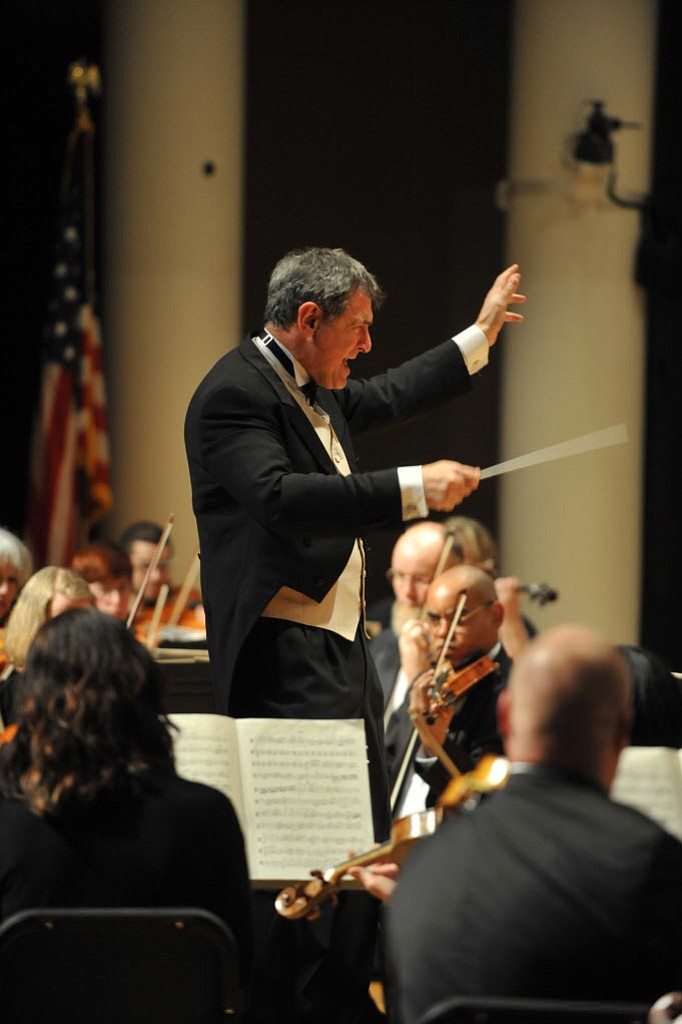Water is the big theme at the season-opening concerts of the Vancouver Symphony on Oct. 4 and 5. Salvador Brotons, who is starting his 24th year as the orchestra’s music director, has chosen four works that should create a splash for this all-orchestral program.
On tap are Ferde Grofé’s “Mississippi Suite,” Bedÿich Smetana’s “The Moldau,” Johann Strauss Jr.’s “The Blue Danube,” and Claude Debussy’s “La mer” (“The Sea”).
o What: All orchestral concert features water music by Grofe, Smetana, Strauss Jr. and Debussy.
o When: 3 p.m. Saturday, 7 p.m. Oct 5.
o Where: Skyview High School Concert Hall, 1300 N.W. 139th St., Vancouver.
o What: All orchestral concert features water music by Grofe, Smetana, Strauss Jr. and Debussy.
o When: 3 p.m. Saturday, 7 p.m. Oct 5.
o Where: Skyview High School Concert Hall, 1300 N.W. 139th St., Vancouver.
o Cost: $50 reserved, $35 general, $30 seniors and $10 students.
o Information: 360-735-7278 or visit Vancouver Symphony Orchestra website.
o Cost: $50 reserved, $35 general, $30 seniors and $10 students.
o Information: 360-735-7278 or visit Vancouver Symphony Orchestra website.
“You can hear the water in each piece, but it’s always in a different style,” noted symphony cellist Annie Harkey Power.
That’s true from the opening downbeat, starting with the jazz-imbued American sound of Grofé, who had one foot in both jazz and classical waters. In January 1924, Grofé took George Gershwin’s “Rhapsody in Blue,” which Gershwin had written for two pianos, and arranged it for a 23-piece orchestra and piano. The premiere, given a month later, caused a sensation, and Grofé later rewrote it for symphonic orchestra and piano, which is the version that is best-known today.
Encouraged by that success, Grofé began to compose his own works for orchestra, including the “Mississippi Suite,” which he wrote in 1925. In four movements, it depicts scenes on a journey along the Mississippi River from its headwaters in Northern Minnesota down to New Orleans. Along the way, you’ll hear music inspired by Mark Twain’s “Huckleberry Finn,” spirituals, and the carnival spirit of Mardi Gras.
Next on the program is Smetana’s “The Moldau” or “Má vlast” (“My Homeland”) in the original Czech title. The work consists of six symphonic poems that were inspired by Czech legends, landscapes, and buildings. The second one is named after the Vltava River, which runs through Prague, but the river has become known as the Moldau through the German language. Smetana composed the entire work over a five-year stretch, ending in 1880, but the six movements were not played as a complete cycle until 18 months before his death in 1884. Due to his profound deafness, he couldn’t hear the performance, but he did see the audience’s over-the-top enthusiasm. Consequently, “Die Moldau,” along with his operas and many other works, solidified Smetana’s standing as the father of Czech music.
“This is my third time to play ‘The Moldau,’ ” said Harkey Power. “I like to call it a ‘cellerific’ piece, because there’s a lot of action for the cellos. It’s a physically difficult piece for the cellos because there’s a lot of repetition with the sixteenth notes.”
Strauss wrote more than 150 waltzes, but the most famous is “The Blue Danube.” It is not one waltz but a chain of five interlinked waltz themes, and its popularity has made it the unofficial national anthem of Austria. Although “The Blue Danube” received a mildly enthusiastic response at its premiere in 1867, it became a huge hit after it was played later that year at the World Exhibition in Paris. Strauss’ publisher then became overwhelmed with so many orders for the piano score that he had 100 new copper plates made so that he could print more than a million copies.
“I’ve played ‘The Blue Danube’ many times,” remarked Harkey Power. “It will be fun to see how Salvador takes it. Sometimes the beat comes late as if we are trying to trip the dancers. It’s tricky to make it sound casual and natural.”
The splashiest piece on the program is Debussy’s “La mer” (“The Sea”), a symphonic tone poem in three movements that depicts the ocean in its many moods. You can easily imagine waves that change from a tranquil state to those that are playful and later absolutely wild.
The impressionistic style of “La mer” has made it one of Debussy’s most popular works for orchestra, but it wasn’t always that way. Many early critics didn’t like it at all. “It is a series of symphonic pictures of sea-sickness,” wrote Louis Elson in the Boston Daily Advertiser in 1907. “The first movement is ‘Headache. The second is ‘Doubt,’ picturing moments of dread suspense, whether or no! The third movement with its explosions and rumblings has now a self-evident purpose. The hero is endeavoring to throw up his boot-heels!”
“This will be my first time to play ‘La mer,’ ” said principal trumpeter Bruce Dunn. “I’ve been listening to several recordings. I also have a CD by Bill Smith who just retired from the first trumpet position with the New York Philharmonic. He explains the approach of the trumpet in his excerpts for this piece, and they are very cool, very intricate, and very good. There are spots with intricate tonguing patterns — triple tonguing and switching between notes. A lot of them are soft. That’s really difficult to do well.”
“I’ve been playing cello for 28 years, and this is my first time to play this great work,” added Harkey Power. “So I’m very excited about it. It has a lot of unusual ways of using time signatures plus many key changes. There’s no particular story line, but we will make it exciting. This music is more than just notes on a page.”



